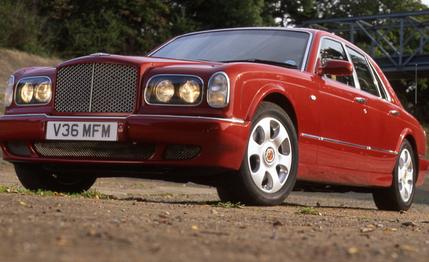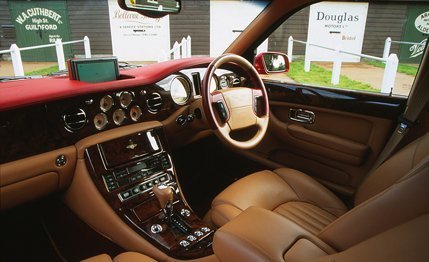 First Drive Review
First Drive Review

Tony Gott, the former engineering director who was appointed chief executive of Rolls-Royce Motor Cars in 1999, gives us a clue that the Bentley Arnage Red Label was the car that the engineers had wanted to do all along. The Arnage, like the Rolls-Royce Silver Seraph, was designed to accept a BMW engine. But, says Gott, "you didn't really think we would make a new car into which our own engine would not fit."
No, we suppose not. Among the dedicated crew at Crewe, the strategy by owner Vickers that saw Rolls-Royce building bodies but stop making engines was never entirely accepted. There was logic in it, if only because the antediluvian 6.75-liter Rolls V-8 was not expected to be emissions-legal by 2001, owing to tougher European exhaust regulations. Vickers was not prepared to spend any more money on it. With the Seraph and Arnage launched, it set out to sell the company.
Along came Volkswagen, snatching Rolls-Royce Motor Cars out of the grasp of BMW, and then losing the rights to the Rolls-Royce name from 2003 on. For that reason, the focus of attention at Crewe these days is on Bentley.
The old heavyweight two-door Bentleys, the Continentals and the Azure, still use what the company likes to refer to as "the six-and-three-quarter-liter engine." Their popularity with Bentley's wealthy clientele has not been affected by all the confusion and uncertainty about the company's future. VW's head man, Dr. Ferdinand Piech, has announced that there will be a less costly Bentley, and it will help increase total production from 2000 units a year to 9000. The Project Hunaudieres show car has an 8.0-liter, 16-cylinder version of Volkswagen's modular VR engine, which is expected to be the power source for the next generation of Bentleys.
Clearly, Volkswagen was uncomfortable with today's main Bentley sedan having a BMW 4.4-liter twin-turbo engine. Long-standing Bentley owners complained that the '99 Arnage lacked the massive, so-easy torque of the old Turbo R. Could that engine --then being made by Cosworth (also acquired by VW and now run by Audi) for the two-door Bentleys -- be adapted to the new emissions regs and the new body?

Tony Gott and his team knew that it could fit in the Arnage. Some preliminary work had been done when the company was put up for sale, as it was feared that BMW might cut off the supply of engines if it did not win the auction. Access to Volkswagen's engine-development laboratories could, they believed, solve the looming emissions problem. Gott was keen to get engine assembly (if not all the machining for which Rolls-Royce was once so famous) back to Crewe: "Building engines is our business," he says with a smile.
Thus was the Arnage Red Label born. This new car has the old engine with its GM four-speed automatic transmission. "Red Label" refers to the background of the Bentley "Flying B" badge; red has traditionally been for the sporting models. It will be sold alongside the BMW-engined version, which, as before, has a green label.
The Red Label delivers 400 horsepower and 619 pound-feet of torque. That's 50 hp and 206 lb-ft more than the Green Label puts out. According to the manufacturer's figures, its 5.9-second 0-to-60 time is 0.3 second quicker and the 0-to-100 run comes 0.9 second sooner, but in Car and Driver's road test (December 1998), the BMW-powered Arnage took 7.4 seconds to reach 60 mph. Maximum speed, limited electronically, increases from 150 to 155 mph. Average fuel consumption is significantly higher (the European combined test cycle average is 12 mpg), and it costs about $6400 more than the 1999 Green Label to buy (the Green Label 2000 price hadn't been set when we went to press).